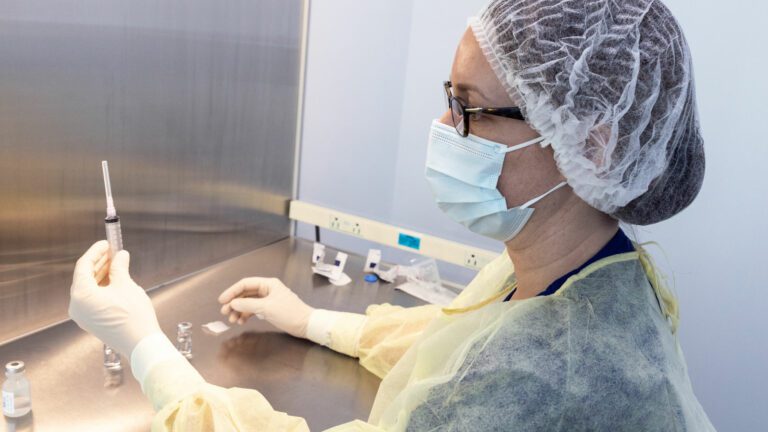
Pharmacy practice consultants have recently encountered several pharmacies where health professionals not regulated by ACP have been engaged in sterile compounding activities within the pharmacy without adhering to sterile compounding standards. This serves as a good reminder that if sterile compounding is taking place in your pharmacy, the licensee is responsible for that activity. Sterile compounding must adhere to the NAPRA Model Standards for Compounding Non-Hazardous and Hazardous Sterile Preparations, approved by ACP Council in 2016.
You may or may not realize your pharmacy is involved in sterile compounding. As indicated in the model standards, compounded sterile preparations include the following:
- nasal inhalation solutions;
- respiratory therapy solutions;
- solutions for live organ and tissue or graft baths;
- injections (e.g., intramuscular, intravenous, intrathecal, intradermal, subcutaneous);
- irrigation solutions for wounds and body cavities (e.g., thoracic, spinal, abdominal, pelvic);
- ophthalmic drops and ointments;
- otic drops for intratympanic administration;
- parenteral nutrition;
- dialysis solutions;
- allergen extracts;
- topical preparations (where sterility is essential to the therapy, e.g., for patients with burns); and
- radiopharmaceuticals.
Pursuant to the model standards, sterility is also required for the reconstitution and certain manipulations (according to manufacturers’ instructions) of sterile products approved by Health Canada and for the repackaging of approved sterile products, regardless of the route of administration.
Pharmacies that perform sterile compounding must report to ACP that they are doing so.
The model standards were developed to ensure sterile preparations that are of high quality and safe. With parenteral therapies becoming more complex, greater attention must be paid to the environment in which these preparations are prepared, the training of personnel and quality assurance procedures to prevent complications, and to protect the public.
The model standards help pharmacies that provide sterile compounding services to evaluate their practices, and develop and implement policies, procedures, and quality assurance programs with a view to guarantee the overall quality and safety of sterile preparations. The model standards represent the minimum requirements to be applied in compounding sterile preparations.
Like the non-sterile compounding standards, the sterile compounding standards (both for hazardous and non-hazardous preparations) were implemented in three priorities.
The first priority focuses on reviewing the model standards, identifying the risk level for each compounded sterile preparation, performing a gap analysis, developing an action plan to address the gaps identified, and initiate a quality assurance program.
The major elements of the second priority include requiring pharmacies to meet or exceed core requirements for a sterile compounding service and the production preparation requirements. It also requires pharmacies to develop and finalize their own quality assurance program. As the deadlines for the first two priorities have already passed, pharmacies that provide sterile compounding services are expected to meet all requirements of these two priorities.
The third priority is to meet or exceed core requirements for facilities and equipment. For pharmacies that perform high-risk sterile compounding, the deadline to meet priority three is July 1, 2020. For pharmacies that perform sterile compounding other than high-risk sterile compounding, the deadline to meet priority three is July 1, 2021.
For more information, refer to the NAPRA Model Standards for Compounding Non-Hazardous and Hazardous Sterile Preparations.




